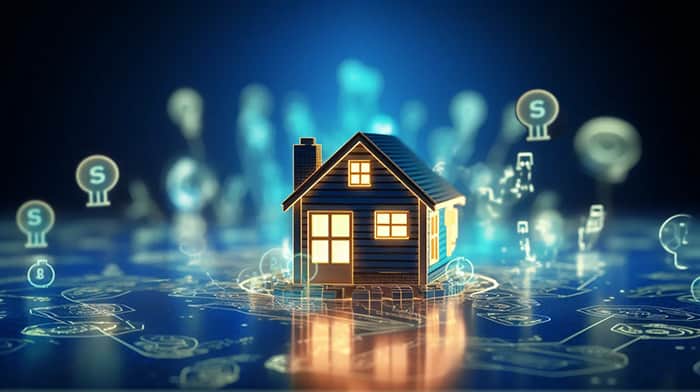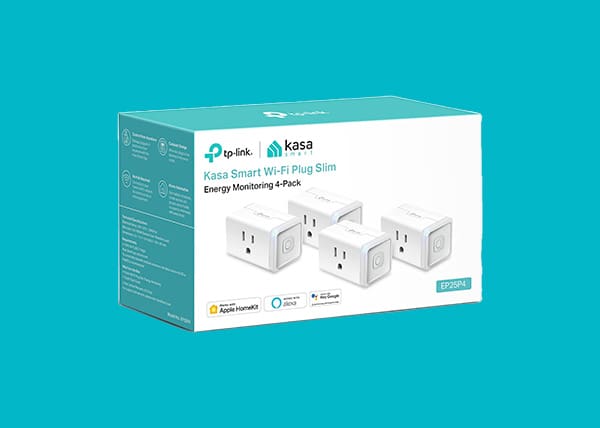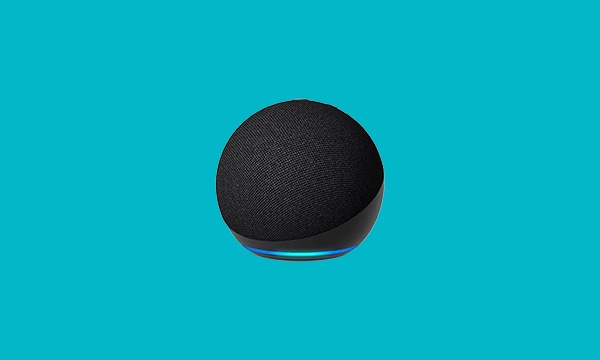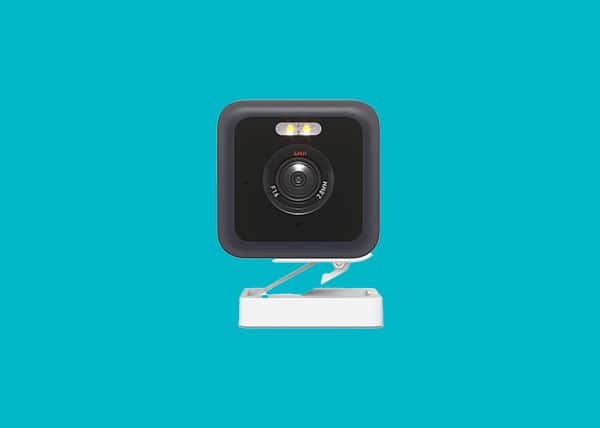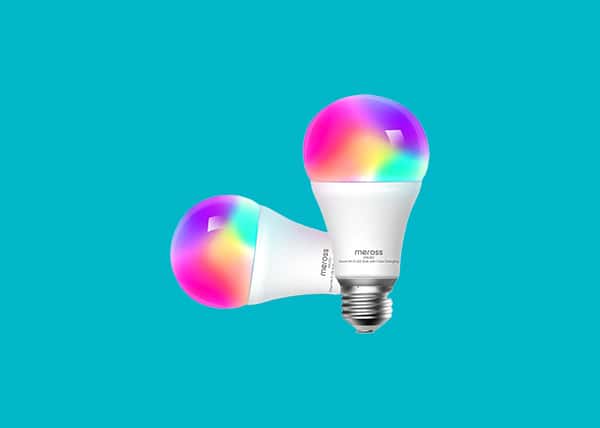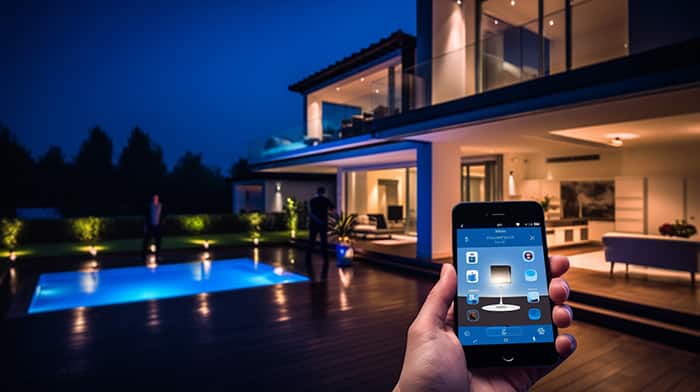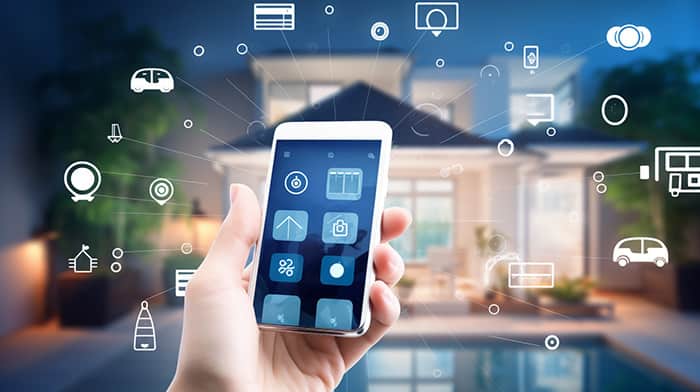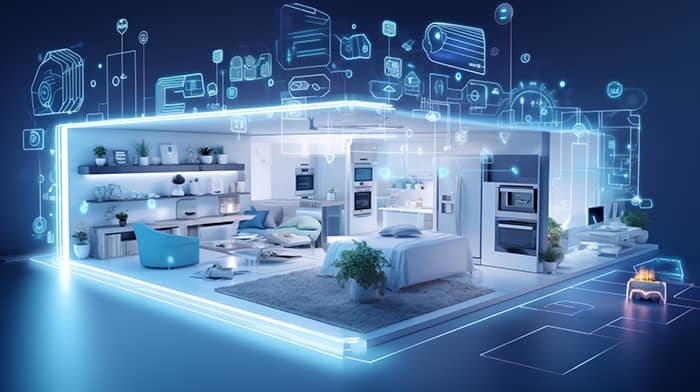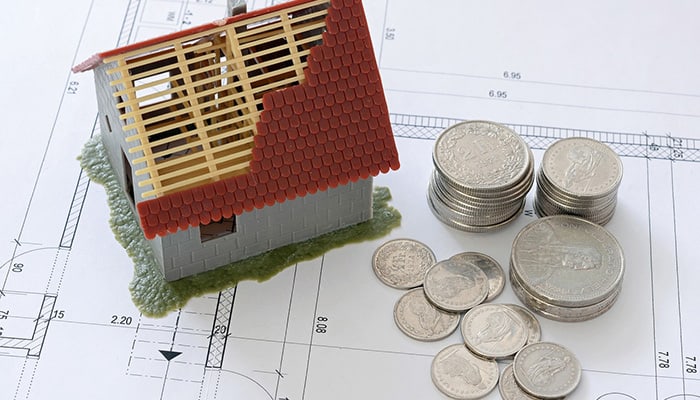Smart Home Calculator Tool by Technocubes
Optimize Smart Home Experience with the Technocubes Calculator Tool

The intricacies of smart homes lie in their interconnectedness. Different devices communicate with each other through a home network, creating a symphony of coordinated functions that work together to make your living space more convenient, secure, and energy-efficient. These smart home systems are customizable to reflect your lifestyle and preferences, which is where the smart home calculator tool by Technocubes comes into play.
Benefits of Smart Home Technologies
There is an array of benefits associated with smart home technologies. Firstly, they offer unparalleled convenience. Imagine controlling your home’s heating, lighting or security systems using just your smartphone. Or your fridge reminding you to buy milk when you’re out. These are some of the conveniences that smart home technologies bring to your doorstep.
Secondly, smart homes provide enhanced security. From smart locks to security cameras, motion sensors to alarm systems, smart homes employ a variety of measures to ensure your safety and peace of mind. Another significant benefit of smart home technologies is energy efficiency. With features like smart thermostats and energy-efficient lighting systems, you can optimize your energy usage, contributing to a greener environment while also saving on your bills.
Technocubes Calculator Tool

As you delve deeper into the world of smart homes, you’ll encounter the need for customization. This is where the Technocubes Calculator Tool comes into the picture. This robust tool is designed to help you optimize your smart home experience, enabling you to get the most out of your smart home technologies.
The Technocubes Calculator Tool is a smart home solution designed to guide homeowners in making their residences more energy-efficient and automated. It offers personalized recommendations based on multiple factors such as the size of the home, the number of occupants, and the current energy usage patterns. The tool not only considers the devices and appliances in the home but also takes into account external factors like weather conditions.
The power of the Technocubes Calculator Tool lies in its ability to calculate potential cost savings over time. By analyzing the reduction in energy consumption, the tool provides homeowners with an estimate of their savings. It also indicates the payback periods for each upgrade option, thereby allowing homeowners to understand the financial implications of their decisions.
In essence, the Technocubes Calculator Tool serves as a comprehensive guide for homeowners wishing to transition to a smarter, more energy-efficient lifestyle. By providing estimated costs and demystifying the complexities of home automation, the tool empowers homeowners to make informed decisions. It can be a valuable tool for anyone striving to achieve greater efficiency and sustainability in their home management.
How the Smart Home Calculator Works
The workings of the smart home calculator tool by Technocubes are quite straightforward. You’ll need to input specific details about your home and lifestyle, such as the size of your home, the number of rooms, and your daily routine. The tool uses this data to calculate and suggest the best smart home technologies for you.
The technology behind the calculator tool is quite advanced. It uses a complex algorithm to analyze your input data and compare it with a vast database of smart home technologies. It then uses this analysis to recommend the most suitable technologies for your specific needs. This personalized approach ensures that you get the most out of your smart home setup.
Steps to Optimize your Smart Home Experience
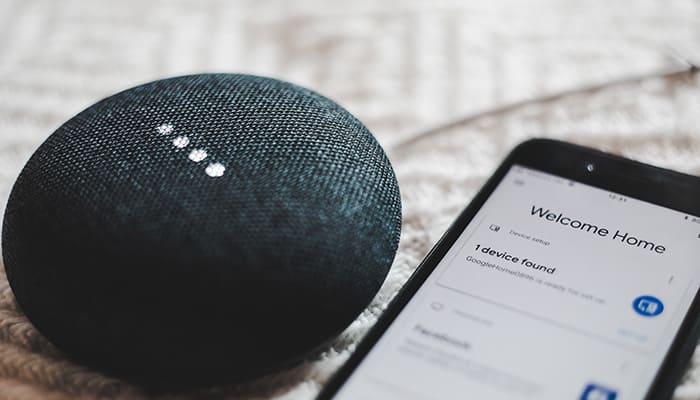
Now that you understand how the smart home calculator tool by Technocubes works, let’s look at the steps to optimize your smart home experience. Firstly, you need to provide accurate details about your home and lifestyle. Remember, the more accurate the information, the more personalized and effective the recommendations.
Next, evaluate the recommendations provided by the tool. Keep an open mind and consider all the suggestions, as they are based on a comprehensive analysis of your needs. Finally, implement the recommended technologies in your home. Remember, the goal is to create a smart home that mirrors your lifestyle and preferences.
- Identify your specific needs and preferences for a smart home, such as security, energy efficiency, or convenience.
- Ensure that the smart devices you choose are compatible with each other and can be integrated into a unified system.
- Set a budget for your smart home project, considering the cost of devices, installation, and any additional services.
- Use the Smart Home Calculator Tool to assess and optimize energy consumption. Consider devices that help reduce energy usage, such as smart thermostats and energy-efficient lighting.
- Focus on security measures, including smart locks, cameras, and motion sensors. Use the tool to evaluate potential vulnerabilities and enhance your home’s security.
- Develop an automation strategy to streamline tasks. For example, schedule lighting, heating, and cooling systems to operate efficiently based on your daily routines.
- Opt for devices that offer user-friendly interfaces and easy integration. This can enhance the overall user experience and make it more accessible for all members of the household.
Smart Home Adjustments using the Calculator

Let’s look at some examples of how the calculator tool can guide your smart home setup. Suppose you live in a large home with multiple rooms and a big family. The tool might suggest a comprehensive security system with smart locks and security cameras for each entry point. Or, based on your busy schedule, it might recommend a smart thermostat and automated lighting system to optimize energy usage.
On the other hand, if you live alone in a smaller space, the tool might suggest a simple smart home setup with a few key technologies like a smart speaker, a smart thermostat, and a few smart plugs. These suggestions are based on your specific needs and lifestyle, ensuring that you get the most out of your smart home.
Tips for Maximizing the Use of Technocubes Calculator Tool
To maximize the use of the Technocubes Calculator Tool, ensure you provide accurate and detailed information. The more accurate the information, the better the recommendations. Consider all the recommendations provided by the tool. Even if a particular technology doesn’t seem appealing at first, consider its benefits and how it fits into your lifestyle. Remember, the tool’s recommendations are based on a comprehensive analysis of your needs. Also keep an eye on updates and enhancements to the tool.
Conclusion
In conclusion, the smart home calculator tool by Technocubes is a powerful tool that can significantly enhance your smart home experience. By considering your needs and lifestyle, it provides personalized recommendations that ensure you get the most out of your smart home technologies.
Whether you’re new to smart homes or an experienced user, the Technocubes Calculator Tool can help you optimize your smart home setup and enjoy a more convenient, secure, and energy-efficient living space. So why wait? Start optimizing your smart home experience today with Technocubes.
Smart Home Calculator Tool by Technocubes Read More »





